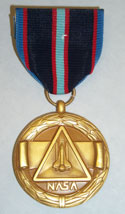
David McDowell Brown was a United States Navy captain and NASA astronaut. He died on his first spaceflight, when the Space Shuttle Columbia (STS-107) disintegrated during orbital reentry into the Earth's atmosphere. Brown became an astronaut in 1996 but had not served on a space mission prior to the Columbia disaster. He was posthumously awarded the Congressional Space Medal of Honor.

Laurel Blair Clark was a NASA astronaut, medical doctor, United States Navy captain, and Space Shuttle mission specialist. She died along with her six fellow crew members in the Space Shuttle Columbia disaster. Clark was posthumously awarded the Congressional Space Medal of Honor.

Michael John Smith, was an American engineer and astronaut. He served as the pilot of the Space Shuttle Challenger when it was destroyed during the STS-51-L mission, when it broke up 73 seconds into the flight, and at an altitude of 48,000 feet (14.6 km), killing all seven crew members. Smith's voice was the last one heard on the Challenger voice recorder.

Guion Stewart Bluford Jr. is an American aerospace engineer, retired United States Air Force (USAF) officer and fighter pilot, and former NASA astronaut, in which capacity he became the first African American to go to space. While assigned to NASA, he remained a USAF officer rising to the rank of colonel. He participated in four Space Shuttle flights between 1983 and 1992. In 1983, as a member of the crew of the Orbiter Challenger on the mission STS-8, he became the first African American in space as well as the second person of African descent in space, after Cuban cosmonaut Arnaldo Tamayo Méndez.
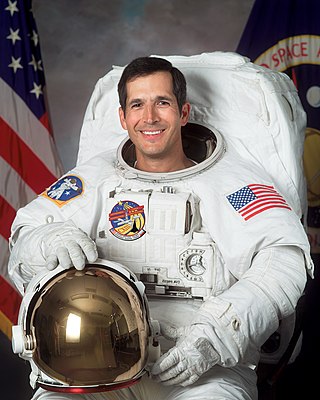
John Bennett Herrington is a retired United States Naval Aviator, engineer and former NASA astronaut. In 2002, Herrington became the first enrolled member of a Native American tribe to fly in space.

Henry Warren Hartsfield Jr. was a United States Air Force Colonel and NASA astronaut who logged over 480 hours in space. He was inducted into the United States Astronaut Hall of Fame in 2006.

The Congressional Space Medal of Honor was authorized by the United States Congress in 1969 to recognize "any astronaut who in the performance of his or her duties has distinguished himself or herself by exceptionally meritorious efforts and contributions to the welfare of the Nation and mankind". It's awarded by the President of the United States in Congress's name on recommendations from the Administrator of the National Aeronautics and Space Administration. The award is a separate decoration from the Medal of Honor, which is a military award for extreme bravery and gallantry in combat.
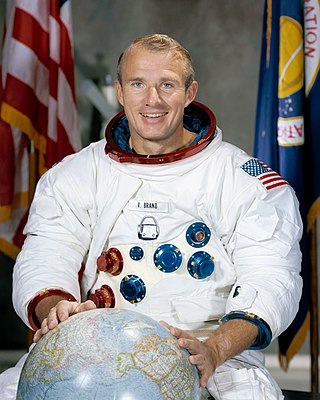
Vance DeVoe Brand is an American naval officer, aviator, aeronautical engineer, test pilot, and NASA astronaut. He served as command module pilot during the first U.S.-Soviet joint spaceflight in 1975, and as commander of three Space Shuttle missions.

Robert Lee Stewart is a retired brigadier general of the United States Army and a former NASA astronaut.
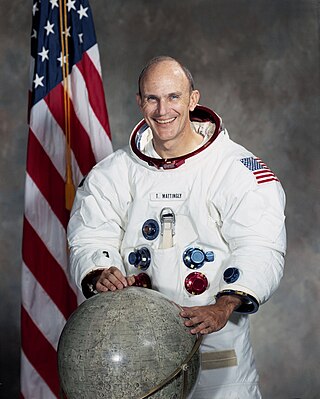
Thomas Kenneth Mattingly II is an American former aviator, aeronautical engineer, test pilot, rear admiral in the United States Navy and astronaut who flew on the Apollo 16, STS-4 and STS-51-C missions.
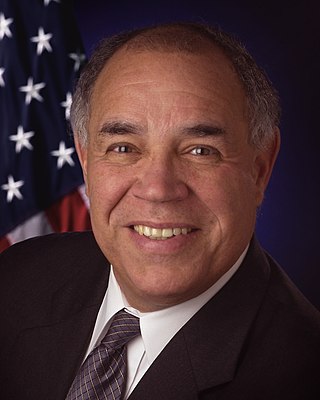
Frederick Drew Gregory is a former United States Air Force pilot, military engineer, test pilot, and NASA astronaut as well as former NASA Deputy Administrator. He also served briefly as NASA Acting Administrator in early 2005, covering the period between the departure of Sean O'Keefe and the swearing in of Michael D. Griffin.

Thomas David Jones is a former United States astronaut. He was selected to the astronaut corps in 1990 and completed four Space Shuttle flights before retiring in 2001. He flew on STS-59 and STS-68 in 1994, STS-80 in 1996, and STS-98 in 2001. His total mission time was 53 days 48 minutes. He works as a planetary scientist, space operations consultant, astronaut speaker, and author.

The United States Astronaut Badge is a badge of the United States, awarded to military and civilian personnel who have completed training and performed a successful spaceflight. A variation of the astronaut badge is also issued to civilians who are employed with the National Aeronautics and Space Administration as specialists on spaceflight missions. It is the least-awarded qualification badge of the United States military.

William Harvey Dana was an American aeronautical engineer, U.S. Air Force pilot, NASA test pilot, and astronaut. He was one of twelve pilots who flew the North American X-15, an experimental spaceplane jointly operated by the Air Force and NASA. He was also selected for participation in the X-20 Dyna-Soar program.
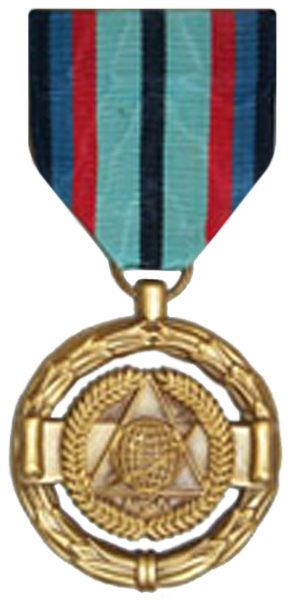
The NASA Exceptional Achievement Medal is an award of the National Aeronautics and Space Administration established in 1991. The medal is awarded to both civilian members of NASA and military astronauts.

Eric Allen Boe is a retired United States Air Force fighter pilot, Colonel, test pilot, and a current, active NASA astronaut. He flew as the pilot of Space Shuttle missions STS-126 and STS-133.

Gregory Harold "Box" Johnson is a former NASA astronaut and a retired colonel in the United States Air Force. Johnson is a veteran of two space flights, STS-123 and STS-134. He served as pilot on his first mission, which delivered the Kibo logistics module and the Dextre robot arm to the International Space Station. Johnson was also assigned as the pilot to the STS-134 mission, which launched on May 16, 2011, and landed on June 1, 2011. Greg Johnson has also served in numerous roles for NASA including as a Capcom for several missions. Gregory H. Johnson was the President and executive director for the Center for the Advancement of Science in Space (CASIS) until March 10, 2018. He is now working with Lockheed Martin.

Gregory Carl "Ray J" Johnson, , is a retired American naval officer and naval aviator, test pilot, aerospace engineer, and NASA astronaut. He spent his military career in both the regular United States Navy and the Navy Reserve. Johnson was the pilot on Space Shuttle mission STS-125, the final Hubble Space Telescope servicing mission.

Michael Timothy "Bueno" Good is a retired NASA astronaut, engineer and retired commissioned officer in the United States Air Force, holding the rank of Colonel. Mike Good flew aboard Space Shuttle Atlantis for its STS-125 mission. STS-125 was the final Hubble Space Telescope servicing mission. Good flew as mission specialist 2 to the International Space Station on STS-132.
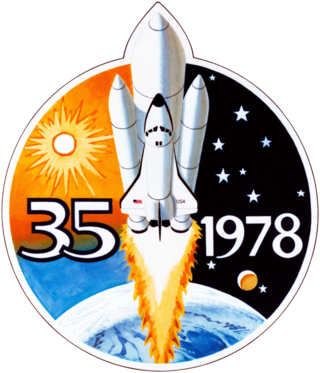
NASA Astronaut Group 8 was a group of 35 astronauts announced on January 16, 1978. It was the first NASA selection since Group 6 in 1967, and was the largest group to that date. The class was the first to include female and minority astronauts; of the 35 selected, six were women, one of them being Jewish American, three were African American, and one was Asian American. Due to the long delay between the last Apollo lunar mission in 1972 and the first flight of the Space Shuttle in 1981, few astronauts from the older groups remained, and they were outnumbered by the newcomers, who became known as the Thirty-Five New Guys (TFNG). Since then, a new group of candidates has been selected roughly every two years.
